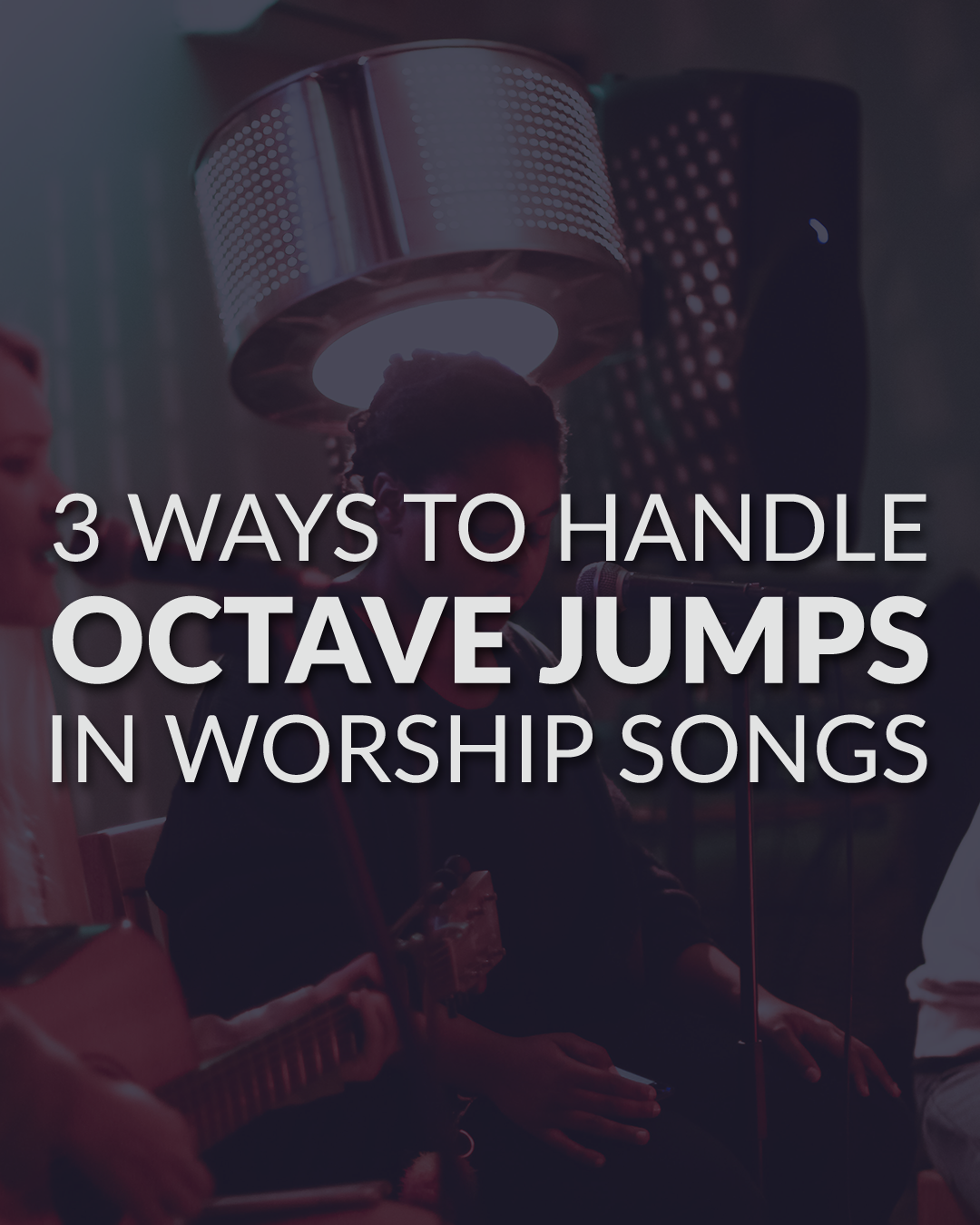3 Ways To Handle Octave Jumps In Worship Songs
One musical element that has become increasingly popular over the years in modern worship music is the octave jump. That's when a song starts in a lower octave and then jumps up to the next octave halfway through the song.
Octave jumps can be great for musical arrangement. They help move the song forward by adding more energy. They create dynamic differences between parts that might otherwise sound similar. So, from an arranger's perspective, they're amazing. But, from a worship leader's perspective, they are often seen as a challenge.
First of all, not all worship leaders have the vocal range to comfortable sing multiple octaves. What often happens is that it's difficult to find a comfortable key - one key is too low and another key is too high. Secondly, octave jumps are challenging for congregational singing. If worship leaders are unable to sing them, chances are your congregation will struggle too. So, what can you do?
Here are 3 ways to handle octave jumps in worship songs:
1 | Don't do them
Simply don't include the octave jump. Stay in the same octave the whole song. This comes at the cost of losing some dynamics but it allows your congregation to comfortably sing along.
2 | Split the vocal between a male and a female
If you want to do an octave jump, this is one of my favorite ways to make it happen. Start with a female singing the lower octave in the song and then, when the song jumps an octave, switch over to a male vocalist. This highlights the arrangement of a song even more. Not only has the melody jumped an octave, now someone different is singing!
3 | Accept that part of the song is going to be particularly low for your congregation
The last thing you can do is simply accept the octave jump. It may not be comfortable for your congregation at every point in the song. If you have to choose between the first part of the song being too low for your congregation to sing and the second part being too high, always choose a key that favors the second half of the song. The second half of the song is nearly always the climax - it's the point where you want people to have no excuse not to the sing.
Disclosure: This post may contain affiliate links, meaning, at no additional cost to you, I will earn a commission if you click through and make a purchase.
5 Tips to Instantly Improve Your Worship Leading
FREE AUDIO TRAINING: Discover 5 simple tips that will instantly improve your worship leading.


